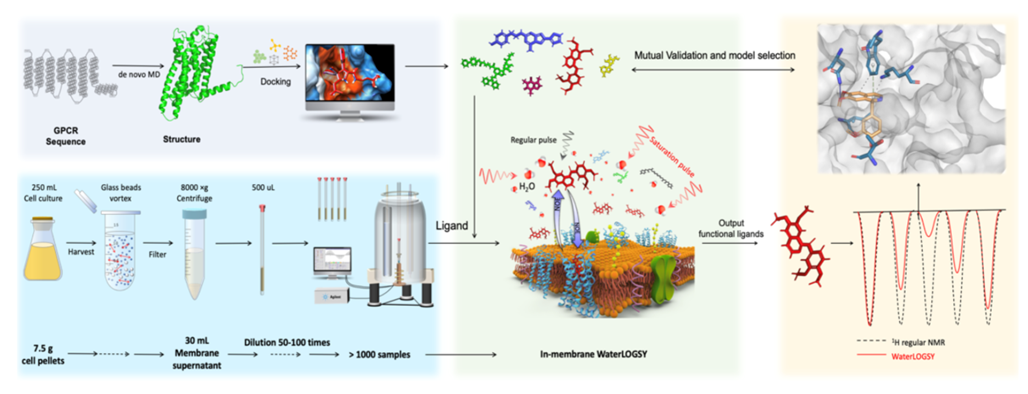Advantages:
- Maintains the original structural and functional properties of receptor proteins
- Enables high-throughput screening through automated NMR workflows with minimal sample quantities
- Enhanced Signal-to-Noise Ratio improves detection of ligand-receptor interactions (e.g. binding orientations, kinetics, and dynamics)
- Applicable to any membrane protein of interest
Summary:
Current methods for studying ligand-membrane protein interactions are limited by their instability in native lipid environments and often rely on laborious methods existing techniques such as In-cell NMR and radioligand binding methods that require substantial sample amounts and lack the sensitivity needed to fully capture the dynamic nature of ligand-protein interactions. There is a demand for methods that retain receptor heterogeneity and functional diversity, crucial for accurate ligand discovery.
This technology introduces a high-throughput NMR platform enabling direct analysis of ligand-GPCR interactions in native membrane environments. This approach preserves receptor functionality without the need for reconstitution or isotopic labeling; and utilizes advanced NMR techniques such as WaterLOGSY, STD, and 19F NMR, enhancing sensitivity and reducing sample requirements. This platform has been validated in well-established GPCRs such as the human Adenosine A1 Receptor (A1R) and Taste receptor type 2 member 14 (TAS2R14), offering an automated, scalable drug screening method providing accurate physiological insights for therapeutic development.

Schematic flowchart of high-throughput in-membrane NMR platform to assist in drug screening of GPCRs integrated with de novo computational simulations.
Desired Partnerships:
- License
- Sponsored Research
- Co-Development